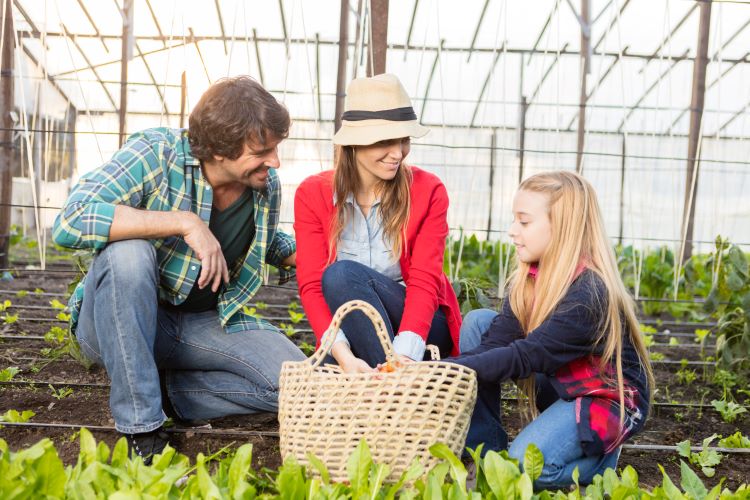
How to Grow a Successful Vegetable Garden
Introduction
Vegetable gardening is a rewarding and fulfilling hobby that can provide you with a bountiful harvest of fresh, nutritious produce. Whether you have a small backyard or a large plot of land, growing your vegetables offers numerous benefits, from cost savings to improved health and sustainability. With the right techniques and planning, anyone can cultivate a thriving vegetable garden that will nourish both your body and your soul.
In this comprehensive guide, we’ll explore the essential steps to growing a successful vegetable garden, from choosing the right location and soil to managing pests and diseases, and finally, harvesting and storing your bounty. By the end of this article, you’ll have the knowledge and confidence to create a vibrant, productive garden that will be the envy of your neighborhood.
Choosing the Right Location and Soil
The foundation of a successful vegetable garden starts with the location and soil quality. When selecting a site for your garden, consider the following key factors:
Sunlight and Shade
Most vegetables thrive in full sun, requiring at least six hours of direct sunlight per day. Choose a spot that receives ample sunlight throughout the growing season, avoiding areas with heavy shade or trees that may compete for nutrients and water.
Wind Direction
Protect your garden from strong, gusty winds that can damage delicate plants and dry out the soil. Situate your garden in a sheltered area, such as near a fence, hedge, or building, to create a more favorable microclimate.
Accessibility
Ensure your garden is easily accessible, preferably near a water source and close to your home for convenient maintenance and harvesting. This will make it easier to tend to your plants regularly and minimize the effort required to care for your garden.
Soil Quality
The quality of your soil is crucial for the health and productivity of your vegetable plants. Before planting, test your soil to determine its pH levels and identify any nutrient deficiencies. Ideally, you want a slightly acidic soil with a pH between 6.0 and 6.8.
To improve soil quality, you can:
- Amend with Organic Matter: Incorporate compost, well-rotted manure, or other organic materials to increase the soil’s nutrient content and improve its water-holding capacity.
- Adjust pH Levels: If your soil is too acidic or alkaline, you can use lime or sulfur to adjust the pH to the optimal range.
- Address Nutrient Deficiencies: Based on your soil test results, add the necessary amendments, such as nitrogen, phosphorus, or potassium, to ensure your plants have access to the essential nutrients they need to thrive.
By preparing the soil properly, you’ll create a foundation that will support the healthy growth of your vegetable plants.
Selecting the Right Vegetables
Choosing the right vegetables for your garden is crucial for success. Consider the following factors when selecting your crops:
Climate and Region
Different vegetables have varying temperature and moisture requirements. Research which vegetables are well-suited for your local climate and growing season to ensure they can thrive in your garden.
Personal Preferences
Select vegetables that you and your family enjoy eating. This will help ensure that your harvested produce is put to good use and not left to waste.
Growing Conditions
Consider the specific needs of each vegetable, such as sun exposure, soil type, and water requirements. Match your vegetable choices to the conditions in your garden to maximize their growth potential.
Some popular vegetables for beginner gardeners include leafy greens (such as lettuce, spinach, and kale), tomatoes, cucumbers, and carrots. These crops are relatively easy to grow and provide a satisfying harvest.
When choosing specific varieties, look for disease-resistant and pest-resistant options that are well-suited to your local climate. Pay attention to the days to maturity, as this will help you plan your planting schedule and ensure a continuous harvest throughout the growing season.
Planting and Watering
Proper planting and watering techniques are essential for the success of your vegetable garden. Follow these guidelines to ensure your plants get the best start:
Planting
When planting your vegetables, pay close attention to spacing, depth, and orientation:
- Spacing: Allow enough space between plants to prevent overcrowding and ensure each plant has access to the necessary resources, such as sunlight, water, and nutrients.
- Depth: Plant seeds and seedlings at the recommended depth to ensure proper root development and establishment.
- Orientation: Position your plants in a way that maximizes their exposure to sunlight and airflow, which can help prevent disease and promote healthy growth.
Watering
Consistent and appropriate watering is crucial for the health and productivity of your vegetable garden. Follow these tips for effective watering:
- Frequency: Water your garden regularly, adjusting the frequency based on factors like weather, soil type, and plant needs. Aim to keep the soil consistently moist, but not waterlogged.
- Amount: Apply enough water to thoroughly soak the soil, reaching the roots of your plants. Avoid shallow, frequent watering, which can lead to shallow root systems.
- Timing: Water your garden in the morning or evening to minimize evaporation and ensure the plants have access to moisture during the hottest parts of the day.
To further enhance your watering efforts, consider using mulch and compost to help retain soil moisture and reduce the frequency of watering. These organic materials also help suppress weeds and improve soil structure, contributing to the overall health and productivity of your vegetable garden.
Pest and Disease Management
Even the most carefully tended vegetable garden can fall victim to pests and diseases. Familiarize yourself with the common issues that may arise and implement integrated pest management (IPM) strategies to keep your plants healthy and thriving.
Common Pests and Diseases
Some of the most prevalent pests that can affect vegetable gardens include aphids, slugs, and various caterpillars. Common diseases include powdery mildew, root rot, and various fungal infections.
Organic Control Methods
Rather than relying on harsh chemical pesticides, explore organic methods for controlling pests and diseases:
- Companion Planting: Strategically plant certain herbs, flowers, or other vegetables that can help repel or confuse pests, or attract beneficial insects that prey on harmful ones.
- Neem Oil: This natural, plant-based oil can be effective in controlling a wide range of pests, from aphids to mites, without harming beneficial insects.
- Baking Soda: A simple baking soda solution can help prevent and treat fungal diseases like powdery mildew.
- Crop Rotation: Regularly rotating the location of your vegetable crops can disrupt the life cycles of pests and diseases, reducing their impact on your garden.
By implementing these IPM strategies, you can maintain a healthy, productive vegetable garden while minimizing the use of harmful chemicals.
Harvesting and Storage
The final step in growing a successful vegetable garden is properly harvesting and storing your bounty. Follow these guidelines to ensure your hard work pays off with a delicious and long-lasting harvest.
Harvesting at the Right Time
Knowing when to harvest your vegetables is crucial for optimal flavor and texture. Pay attention to the following indicators:
- Color and Texture: Look for vibrant, crisp vegetables that are free of blemishes or damage.
- Size and Shape: Harvest vegetables when they reach the appropriate size and shape for their variety.
- Taste and Smell: Regularly sample your vegetables to ensure they have reached peak ripeness and flavor.
Storage Techniques
Proper storage is essential for preserving the quality and freshness of your harvested vegetables. Consider the following options:
- Cool, Dry Places: Store vegetables in a cool, dark place, such as a root cellar or a well-ventilated shed, to extend their shelf life.
- Freezing and Canning: Preserve your harvest for later use by freezing or canning your vegetables. This allows you to enjoy the bounty of your garden throughout the year.
By mastering the art of harvesting and storage, you can maximize the enjoyment and utility of your vegetable garden, ensuring that your hard work and dedication pay off with a bountiful and long-lasting harvest.
Conclusion
Growing a successful vegetable garden is a rewarding and fulfilling endeavor that can provide you with a steady supply of fresh, nutritious produce. By following the steps outlined in this guide, you’ll be well on your way to cultivating a thriving garden that will nourish both your body and your soul.
Remember, the key to a successful vegetable garden lies in careful planning, attentive care, and a willingness to experiment and learn. With the right techniques and a little bit of patience, anyone can create a vibrant, productive garden that will be the envy of the neighborhood.
So, what are you waiting for? Grab your gardening gloves and get started on your journey to growing a bountiful vegetable garden today!


